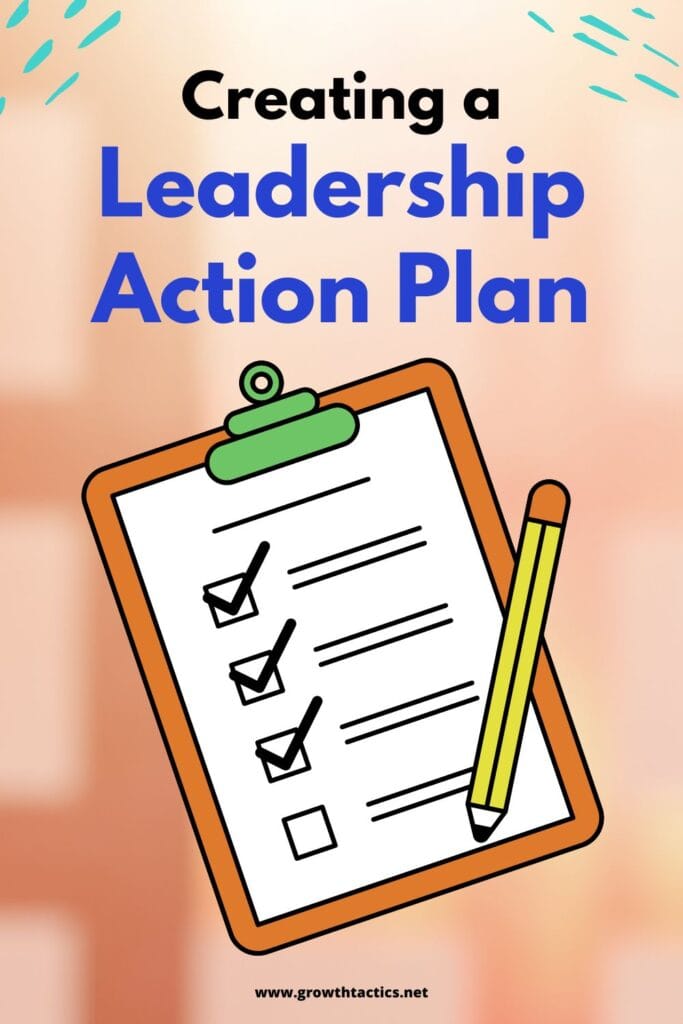Effective leadership is more crucial than ever in today’s fast-paced business environment. Whether you’re an aspiring leader or a seasoned executive, there’s always room for growth and improvement. This article will guide you through the process of creating a leadership action plan to enhance your skills and accelerate your development journey.
Jump To Section
Understanding Your Current Leadership Abilities
Before truly embarking on your leadership development journey, it’s crucial to have a clear and honest understanding of your current leadership abilities. This foundational step ensures that you build your growth on a well-informed baseline, enabling you to tailor your action plan to address specific needs and leverage your existing strengths.
Here are several steps you can take to thoroughly understand your current leadership abilities.
Self-Assessment
The first step in understanding your current leadership abilities involves a thorough self-assessment. Reflect on your experiences, behaviors, and outcomes as a leader. Consider the following questions:
- What are my core strengths as a leader?
- Which areas do I struggle with the most?
- How do I handle stress and conflict within my team?
- Am I able to communicate my vision clearly and effectively?
- How do my decisions impact the people I lead?
There are also various structured tools and questionnaires available to help with self-assessment. These might include personality tests such as the Myers-Briggs Type Indicator (MBTI) or leadership assessments like the Leadership Practices Inventory (LPI). These tools can provide structured insights into your leadership style, strengths, and areas that may need development.
Feedback from Peers and Subordinates
Self-assessment is just one part of the picture. To gain a more comprehensive understanding, it’s essential to solicit feedback from those who work closely with you. This 360-degree feedback offers diverse perspectives on your leadership abilities and behaviors.
Consider implementing anonymous surveys to gather honest and candid feedback from your colleagues and team members. Ask them questions such as:
- What do you consider my greatest strengths as a leader?
- Where do you think I could improve?
- How do my actions and decisions impact the team’s morale and productivity?
- What should I do differently to be a more effective leader?
In addition to surveys, face-to-face feedback sessions can be very insightful. Create an open and safe environment where your peers and subordinates feel comfortable sharing their thoughts.
Identifying Strengths and Areas for Improvement
Once you have gathered self-assessment data and feedback from others, the next step is to compile this information to identify your strengths and areas for improvement.
Look for common themes and patterns in the feedback. For instance, if multiple people mention that you need to work on your communication skills, this is an area to focus on.
Create a list that categorizes your strengths and weaknesses, providing specific examples wherever possible. This clarity will help you design a more targeted and effective leadership development plan.
Setting a Baseline
Assessing your current leadership abilities sets a baseline against which you can measure your progress. Document your starting point clearly, including both qualitative descriptions and any quantifiable metrics available. This baseline will serve as a reference to evaluate how far you’ve come and to adjust your goals and strategies over time.
Example of a Detailed Self-Assessment Process
- Write a Reflective Journal: Spend a week documenting your leadership experiences, focusing on moments that challenged you or required significant decision-making.
- Conduct a SWOT Analysis: Identify your Strengths, Weaknesses, Opportunities, and Threats in the context of your leadership role.
- 360-Degree Feedback: Distribute an anonymous survey to at least five peers, subordinates, and supervisors, asking for detailed feedback on specific leadership behaviors.
- Review and Reflect: Once all the data is gathered, spend time reviewing the feedback. Look for recurring themes and specific instances that highlight areas for improvement and strengths.
Taking Action Based on Assessment
After thoroughly understanding your current leadership abilities, the next step is to translate these insights into actionable goals. This involves setting specific, measurable objectives aimed at improving your weaknesses and building on your strengths. This foundational assessment paves the way for a more focused and effective leadership development journey.
Understanding your current leadership abilities is a critical first step in creating a tailored and effective leadership action plan. It sets the stage for targeted goal-setting, strategic growth, and, ultimately, becoming a more effective and inspiring leader.
Setting Leadership Development Goals
With a clear understanding of your current abilities, the next step is to set precise and impactful leadership development goals. These goals will serve as the roadmap for your growth and ensure that your efforts are focused and measurable. A well-structured goal-setting process increases the likelihood of tangible improvements and ongoing development. Here’s how you can go about setting effective leadership development goals:
The Importance of SMART Goals
The SMART criteria are fundamental to effective goal setting, ensuring that your objectives are:
- Specific: Clearly defined and specific goals prevent ambiguity and set a clear direction.
- Measurable: Goals should have indicators that help you track your progress and determine when they have been achieved.
- Achievable: While challenging, goals should still be realistic and attainable given your resources and constraints.
- Relevant: Your goals should align with both your personal development needs and your organization’s objectives.
- Time-bound: Set specific deadlines to create a sense of urgency and motivate continuous progress.
Steps to Setting SMART Goals to Improve Your Leadership
- Identify Core Areas for Improvement Start by pinpointing specific areas where you need improvement. This should be based on your self-assessment and feedback from peers and subordinates. For example, if communication is an area that needs work, that should feature prominently in your development plan.
- Define Specific Objectives Define what success looks like in each area you want to improve. Instead of a vague goal like “improve communication,” specify what aspects of communication you want to work on. For example, “enhance my public speaking skills by delivering monthly presentations” is much more specific.
- Set Measurable Indicators Determine how you’ll measure your progress. Measurable indicators help you track progress and celebrate milestones. For example, “improve public speaking skills” can be measured by “receiving positive feedback from at least 80% of attendees in post-presentation surveys.”
- Ensure Goals Are Achievable While ambition is key, the goals must also be realistic. Stretch goals are excellent, but they shouldn’t be so far-fetched that they become discouraging. For instance, committing to “improving team morale by 50%” can be more realistic and achievable than aiming to double it.
- Align with Organizational Needs Your personal leadership goals should also align with the broader needs and objectives of your organization. If your company is focusing on innovation, for example, your leadership goals might include fostering a more creative team environment.
- Set Time-Bound Targets Establish deadlines for achieving your goals. Time-bound goals prompt you to make steady progress and create checkpoints for reassessment and adjustment. For example, aim to “complete a leadership training course within six months.”
Examples of SMART Leadership Development Goals
- Improve Communication Skills
- Specific: Enhance my public speaking and presentation skills.
- Measurable: Deliver a presentation every month and achieve at least 80% positive feedback from attendees.
- Achievable: Attend a public speaking workshop and practice with a mentor.
- Relevant: Effective communication is essential for departmental meetings and stakeholder presentations.
- Time-bound: Achieve this within the next six months.
- Enhance Decision-Making Abilities
- Specific: Improve my ability to make timely, well-informed decisions.
- Measurable: Implement a decision-making framework and track the outcomes of key decisions over the next quarter.
- Achievable: Participate in a decision-making course and review case studies.
- Relevant: Better decisions will improve project outcomes and team efficiency.
- Time-bound: Accomplish this within three months.
- Develop Emotional Intelligence
- Specific: Enhance self-awareness and empathy.
- Measurable: Increase peer feedback scores related to emotional intelligence by 20%.
- Achievable: Engage in regular self-reflection and attend emotional intelligence training.
- Relevant: Strong emotional intelligence is crucial for team leadership and conflict resolution.
- Time-bound: Achieve this within four months.
Aligning Goals with Organizational Needs
It’s important to ensure that your personal leadership development goals align with your organization’s needs. Here’s how:
- Consult with Supervisors: Discuss your goals with supervisors to ensure they align with organizational priorities.
- Review Organizational Objectives: Understand the broader goals of the organization and identify how your personal development can contribute.
- Dynamic Alignment: As organizational goals evolve, be prepared to adjust your leadership development goals accordingly.
Prioritizing Skills with the Greatest Impact
Given that time and resources are finite, it’s essential to prioritize the skills that will have the most significant impact on your leadership effectiveness. Focus on areas that will yield the highest return on investment, both for yourself and your organization. This prioritization ensures that efforts are directed towards enhancing the most critical aspects of your leadership capabilities.
For example:
- Impact on Team Dynamics: Skills that improve team morale and productivity often have a substantial impact.
- Strategic Importance: Focus on skills that contribute to achieving the long-term strategic objectives of your organization.
- Personal Growth: Prioritize the development of skills that align with your career aspirations and long-term growth.
Components of a Leadership Action Plan
A comprehensive leadership action plan serves as a strategic guide to enhance your leadership capabilities effectively. Here’s a deep dive into each essential component:
1. Specific Leadership Skills to Improve
Identify the specific leadership skills you want to improve. These should be based on self-assessments, peer feedback, and alignment with both personal and organizational goals. Prioritize these skills based on their importance and the impact they will have on your overall leadership effectiveness.
Examples
- Communication Skills: Public speaking, active listening, non-verbal communication.
- Decision-Making Abilities: Analytical thinking, strategic planning, problem-solving.
- Emotional Intelligence: Self-awareness, empathy, relationship management.
2. Actionable Steps for Each Skill
Each identified skill should be broken down into smaller, actionable steps. These tasks should be clear, achievable actions that contribute towards mastering the specific skill.
Detailed Steps
- Develop Communication Skills:
- Attend a professional communication workshop.
- Practice public speaking by joining a club like Toastmasters.
- Solicit feedback after presentations and act on constructive criticism.
- Enhance Decision-Making Abilities:
- Enroll in a decision-making and strategic thinking course.
- Analyze case studies to understand different decision-making frameworks.
- Apply a systematic decision-making model to everyday leadership situations.
- Improve Emotional Intelligence:
- Participate in an emotional intelligence training program.
- Engage in regular self-reflection and journaling to increase self-awareness.
- Conduct regular one-on-one meetings to better understand team members’ perspectives.
3. Timeline with Milestones
Set a realistic timeline that includes specific milestones. This timeline should outline what you aim to achieve and by when. Milestones act as checkpoints that help measure progress and keep you on track.
Example of a Timeline
- Month 1-2: Complete initial assessments and identify priority skills.
- Month 3-4: Begin workshops and training sessions for prioritized skills.
- Month 5-6: Implement learned techniques in real-world situations and gather feedback.
- Month 7-8: Review progress against initial goals and adjust the plan if necessary.
- Month 9-12: Achieve final milestones and prepare a comprehensive review of the development journey.
4. Required Resources
Identify the resources you will need to achieve your goals. This includes time, financial investment, training programs, mentors, and any other materials or support systems.
Examples of Resources
- Training Programs: Enroll in relevant workshops, online courses, or seminars.
- Mentorship: Find a mentor who can provide guidance and feedback.
- Financial: Budget for expenses related to training and development.
- Time: Allocate specific times during the week dedicated to skill development.
5. Measurable Outcomes
Determine how you will measure success for each skill. Measurable outcomes provide clear criteria to evaluate your progress and achievements.
Examples of Measurable Outcomes
- Communication Skills: Achieve a certain positive feedback score (e.g., 80%) from presentations or public speaking engagements.
- Decision-Making Abilities: Track the success rate of decisions using a predefined metric, such as project completion rates or team performance improvements.
- Emotional Intelligence: Use peer feedback tools to gauge improvements in emotional intelligence, aiming for a specified percentage increase in positive feedback.
By encompassing these components, your leadership action plan becomes a structured and effective roadmap for development. This comprehensive approach not only facilitates focused personal growth but also ensures that your progress is measurable and aligned with both personal aspirations and organizational goals.
A well-crafted leadership action plan enhances accountability, enhances motivation, and increases the likelihood of achieving your leadership development objectives.
Conclusion
Creating a leadership action plan is a powerful tool for improving your skills and advancing your career. By understanding your current abilities, setting clear goals, and implementing a structured plan for development, you can become a more effective leader.
Remember that leadership development is an ongoing process. Continually reassess your skills, adjust your plan, and strive for growth.
As you embark on this journey, keep in mind that true leadership goes beyond technical skills. It encompasses emotional intelligence, vision, and the ability to inspire others. Your leadership action plan should reflect these broader aspects of leadership while focusing on specific, measurable improvements.
Take the first step today. Reflect on your leadership abilities, set ambitious yet achievable goals, and create a leadership action plan that will guide your development journey. With dedication and consistent effort, you can enhance your leadership skills and make a lasting impact on your team and organization.








